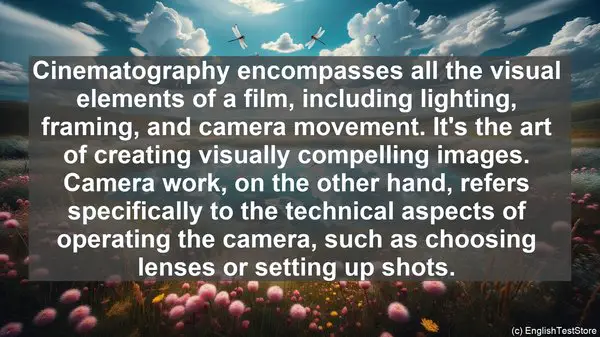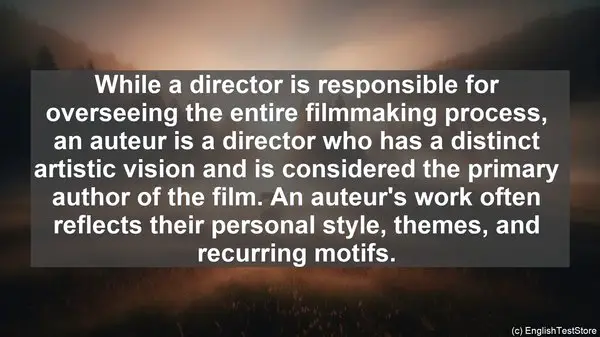Introduction
Welcome to our film studies class. Today, we’re going to dive into a topic that often trips up even the most seasoned film enthusiasts: commonly confused words. While the world of cinema is full of excitement, it’s also a place where language nuances matter. So, let’s get started!
1. Scene vs. Shot
These two terms are often used interchangeably, but they have distinct meanings. A scene refers to a sequence of continuous action in a single location, while a shot is a continuous sequence of frames captured by the camera. So, a scene can have multiple shots, but a shot is part of a scene.
2. Montage vs. Collage
Both montage and collage involve combining different elements, but in film studies, they have different purposes. A montage is a sequence of short shots edited together to convey a passage of time or a series of events. On the other hand, a collage is a collection of images or scenes that may not have a specific temporal connection.
3. Diegetic vs. Non-Diegetic
Diegetic and non-diegetic sounds are crucial in creating the film’s auditory landscape. Diegetic sounds are those that exist within the film’s world, like dialogue or ambient noises. Non-diegetic sounds, such as background music or voice-overs, are added in post-production and are not part of the film’s narrative reality.
4. Plot vs. Story
While these terms are related, they have distinct meanings. The story refers to the chronological sequence of events, including everything that happens in the film’s world. On the other hand, the plot is the specific way those events are presented to the audience, including the order, structure, and narrative devices used.
5. Cinematography vs. Camera Work
Cinematography encompasses all the visual elements of a film, including lighting, framing, and camera movement. It’s the art of creating visually compelling images. Camera work, on the other hand, refers specifically to the technical aspects of operating the camera, such as choosing lenses or setting up shots.
6. Protagonist vs. Main Character
While the protagonist is often the main character, they are not always the same. The protagonist is the character whose actions drive the central conflict of the story. The main character, on the other hand, is simply the character with the most screen time or the one the audience follows the most.

7. Homage vs. Parody
Both homage and parody involve referencing or imitating other works, but they have different intentions. An homage is a respectful tribute to a film, director, or genre, while a parody is a comedic imitation that often satirizes the original work.

8. Blocking vs. Staging
In film, blocking refers to the planned movement and positioning of actors within a scene. It’s about their physical actions and interactions. Staging, on the other hand, refers to the overall composition of the scene, including the placement of props, set design, and visual elements.
9. Dolly vs. Zoom
Both dolly and zoom involve changing the camera’s distance from the subject, but they have different effects. A dolly shot is when the camera physically moves closer or farther from the subject, creating a smooth, fluid motion. A zoom, on the other hand, is achieved by adjusting the camera’s lens, resulting in a change in focal length and a compressed or expanded perspective.
10. Auteur vs. Director
While a director is responsible for overseeing the entire filmmaking process, an auteur is a director who has a distinct artistic vision and is considered the primary author of the film. An auteur’s work often reflects their personal style, themes, and recurring motifs.
